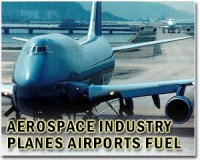 |
Payerne, Switzerland (AFP) July 8, 2010 The Solar Impulse aircraft, which made history Thursday with the first round the clock flight using energy from drawn the sun, boasts cutting edge technology from ultra efficient electronics to lightweight materials. It is been dubbed the "zero fuel aircraft" by the team, which claims the plane has "the wingspan of a jumbo jet, the weight of a car and the power of a scooter." The final design of the Swiss-made aircraft emerged in 2007 and it was built a year later by Solar Impulse engineers, with the backing of sponsors in the electronics, engineering, aerospace and solar energy industries, as well as one of Switzerland's top technical universities. The primary aim was to save energy and build a lightweight yet extremely strong craft that was also able to resist the huge temperature variations involved in modern flying in a matter of minutes or hours. The beige and silver grey prototype, registered HB-SIA, was largely made out of composite materials and complex alloys, to marry the wing span of a Airbus A340 intercontinental airliner with a weight of just 1,600 kilogrammes. The 12,000 ultra thin solar cells, spread over a wing area equivalent to 200 square metres, fed a 400 kilogramme load of lithium polymer batteries, which have still not reached mass production electric cars. Each of the four electric motors produced up to ten horsepower - six kilowatts -- each barely more than the one that helped the Wright Brothers to make history in 1903 by hopping off the ground on the first powered flight. The 3.5-metre long propellors also rotated noticeably slowly compared to a traditional propellor engined aircraft. Some of the control systems were specially made, including a highly precise instrument to measure the smallest change in tilt of the aircraft, which was made by a watchmaking group, according to Solar Impulse. The instrument was also rigged up to the sleeves of a flight jacket to alert the pilot to any excessive change. Pilot Andre Borschberg said the seven years of planning, design, construction and refinement of the aircraft had helped yield about 50 developments on materials technology for one supplier. The batteries were also improved, he added, in some instances by bringing separate industrial partners and suppliers together in the project. "The second airplane will be even more performing with lighter, thinner solar cells and more efficient systems," said Solar Impulse chief Bertrand Piccard, also promising more stretching room for the pilot.
Key dates of sun-powered Solar Impulse plane project
Share This Article With Planet Earth
Related Links Aerospace News at SpaceMart.com
 Brazil's Embraer expands into China
Brazil's Embraer expands into ChinaSao Paulo (UPI) Jul 7, 2010 Brazil's Embraer announced expansion of its aviation business into China with the opening of a subsidiary company that will provide technical services for aircraft already on the Chinese inventory and many more on order. The aircraft maker said it is investing $18 million into the new operation that supplements previous activities of Embraer in China and is seen by analysts as part of B ... read more |
|
| The content herein, unless otherwise known to be public domain, are Copyright 1995-2010 - SpaceDaily. AFP and UPI Wire Stories are copyright Agence France-Presse and United Press International. ESA Portal Reports are copyright European Space Agency. All NASA sourced material is public domain. Additional copyrights may apply in whole or part to other bona fide parties. Advertising does not imply endorsement,agreement or approval of any opinions, statements or information provided by SpaceDaily on any Web page published or hosted by SpaceDaily. Privacy Statement |